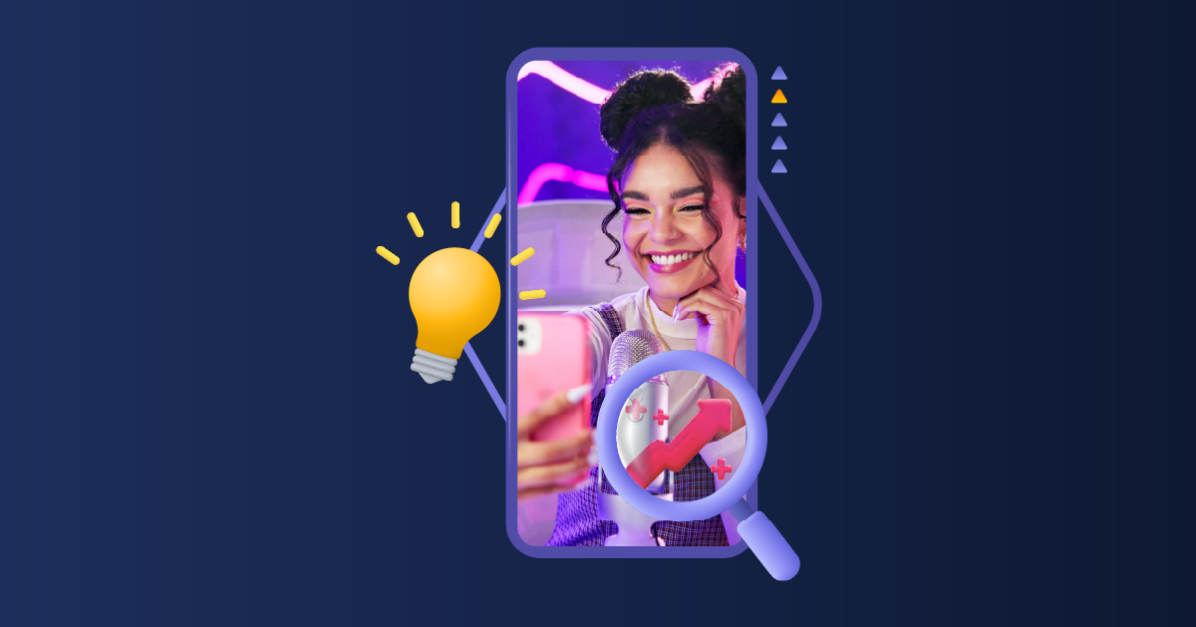Influencer marketing has transformed from a niche strategy into a powerhouse of digital engagement, reshaping how brands connect with consumers. As we look toward 2025, the industry is poised for explosive growth, with the global influencer marketing platform market projected to reach $97.55 billion by 2030, growing at a compound annual growth rate (CAGR) of 23.3% from 2025. This surge is driven by evolving consumer preferences, technological advancements, and innovative approaches to building trust and authenticity. From AI-powered campaign optimization to the rise of micro-influencers, the trends shaping influencer marketing in 2025 promise to enhance customer engagement and drive measurable results. This blog explores the key influencer marketing trends for 2025, the factors fueling its growth, why it matters for brands, and how it can ignite consumer engagement, providing a roadmap for marketers to stay ahead in this dynamic landscape.
1. The Explosive Growth of Influencer Marketing
Influencer marketing is experiencing unprecedented growth, with global spending reaching $32.55 billion in 2025, up from $24 billion in 2024, reflecting a remarkable 35.63% year-over-year increase. This expansion is fueled by brands’ increasing reliance on influencers to reach targeted audiences, particularly as traditional advertising channels lose traction. The rise of social media platforms like TikTok, Instagram, and YouTube Shorts has created fertile ground for influencer-led campaigns, with 86% of consumers making a purchase inspired by an influencer at least once a year. In North America alone, the influencer marketing platform market held a 29% revenue share in 2024, driven by advanced analytics and AI integration. Brands are shifting budgets toward influencers who can deliver authentic, engaging content, moving away from celebrity-driven campaigns toward creators with niche, loyal followings. This growth underscores influencer marketing’s role as a cornerstone of modern digital strategies, offering brands a powerful way to connect with consumers.
2. The Rise of Micro-Influencers and Authentic Connections
In 2025, micro-influencers—those with 10,000 to 100,000 followers—are stealing the spotlight due to their ability to foster genuine connections. Unlike mega-influencers, micro-influencers boast higher engagement rates, often exceeding 7%, because their audiences trust their relatable, unfiltered content. As noted by industry experts, consumers are gravitating toward authentic storytelling, with 67% citing honesty and unbiased content as key factors in influencer-driven purchases. Brands are moving away from overly scripted campaigns, favoring conversational guidelines that allow influencers to integrate products seamlessly into their lives. For example, Resident, a direct-to-consumer mattress brand, doubled post value by leveraging micro-influencers in their affiliate channels, creating authentic user-generated content (UGC) that outperformed traditional ads. This trend highlights the shift toward trust-driven campaigns, where micro-influencers act as brand advocates who resonate deeply with niche communities.

3. AI-Powered Influencer Marketing: The Future of Precision
Artificial intelligence is revolutionizing influencer marketing in 2025, streamlining everything from creator discovery to campaign optimization. AI tools now analyze audience sentiment, engagement metrics, and content performance to match brands with the right influencers, ensuring alignment with target demographics. Predictive analytics can identify rising creators before their rates peak, while sentiment analysis evaluates the strength of influencer-audience relationships. In 2025, 76% of C-suite executives report increased budgets for AI-driven influencer campaigns, recognizing their ability to enhance ROI. For instance, AI platforms like impact.com/creator enable brands to build UGC libraries with authentic content, as seen in Resident’s campaign that boosted profitability. However, AI remains a support tool, not a replacement for human creativity—its role is to enhance efficiency while preserving the human connections that define influencer marketing’s success. This blend of technology and authenticity is setting the stage for smarter, more effective campaigns.
4. Why Influencer Marketing Matters for Consumer Engagement
Influencer marketing’s power lies in its ability to foster trust and emotional resonance, making it a vital tool for consumer engagement. Unlike traditional ads, influencers create conversational, relatable content that feels like a recommendation from a friend. Studies show influencer campaigns yield up to 11 times higher ROI than banner ads, driven by higher click-through rates and conversions. In 2025, brands prioritizing long-term influencer partnerships report 99% effectiveness in their programs, as consistent collaborations build deeper audience loyalty. Interactive content like giveaways, live sessions, and exclusive discount codes further amplifies engagement, with 37% of B2B brands citing boosted customer loyalty as a top goal. Influencers’ transparency about partnerships and genuine product endorsements enhance credibility, making them a trusted bridge between brands and consumers. This trust-driven approach is why influencer marketing remains a cornerstone for driving purchase intentions and brand advocacy.
5. The Shift to Multi-Platform Strategies
The days of Instagram dominating influencer marketing are fading as creators diversify across platforms like TikTok, YouTube Shorts, and Substack. In 2025, influencers are expanding their reach to maximize audience engagement, with platforms like YouTube reporting a 1.83% engagement rate for travel content, the highest among categories. This multi-platform approach allows brands to connect with audiences across different touchpoints, from short-form videos on TikTok to in-depth content on YouTube. Posts on X highlight this shift, noting that brands are building long-term collaborations with creators who leverage multiple channels to integrate products into their lifestyle. Podcasters, with over 6 million active shows globally, are also emerging as key influencers, offering brands a conversational medium to reach engaged listeners. This trend toward platform diversification ensures brands can meet consumers where they are, enhancing reach and relevance.

6. Performance-Driven Partnerships and ROI Focus
Brands in 2025 are prioritizing performance-driven influencer partnerships, moving away from flat-fee models to hybrid compensation structures that incentivize conversions. This shift reflects a broader focus on measurable ROI, with 68% of marketers tracking social media engagement metrics and 50% monitoring link traffic to gauge campaign success. Tools like AgencyAnalytics enable real-time tracking of sales, conversions, and reach, allowing brands to optimize campaigns dynamically. For example, USIMS’s 2025 campaign, executed with NeoReach, achieved 300,000 app downloads and a 31.88% conversion rate by leveraging localized influencer strategies. This focus on measurable outcomes aligns with consumer demand for authenticity, as brands partner with influencers who genuinely align with their values, ensuring campaigns resonate and drive tangible results.
7. Navigating Challenges and Regulatory Shifts
While influencer marketing thrives, it faces challenges like influencer fatigue and stricter regulations. Audiences are increasingly savvy about sponsored content, with overly scripted posts risking credibility loss. Regulatory bodies, including the FTC, are enforcing clearer disclosure rules, requiring influencers to transparently label sponsored content. Brands must navigate these guidelines to maintain trust, as undisclosed partnerships can damage reputations. Additionally, inconsistent engagement metrics due to algorithm changes pose challenges for campaign planning. Posts on X emphasize the importance of trust over follower count and long-term collaborations over one-off posts, reflecting a strategic shift toward sustainable partnerships. By focusing on authentic, transparent content and leveraging AI tools to monitor compliance, brands can overcome these hurdles and build lasting consumer connections.
8. The Future of Influencer Marketing in 2025

Influencer marketing in 2025 is a dynamic blend of technology, authenticity, and strategic partnerships. The rise of virtual influencers, powered by AI, offers brands control over content while engaging tech-savvy audiences, particularly in fashion and lifestyle niches. Nano-influencers, making up 75.9% of Instagram’s influencer base, continue to drive niche engagement, while long-form content on YouTube thrives for educational and travel campaigns. As social commerce platforms integrate with influencer strategies, brands can expect seamless purchase journeys, with influencers acting as trusted guides. By embracing these trends—AI optimization, multi-platform presence, and performance-driven models—marketers can harness influencer marketing’s potential to fuel consumer engagement, build brand loyalty, and drive growth in an ever-evolving digital landscape.


.jpg)










